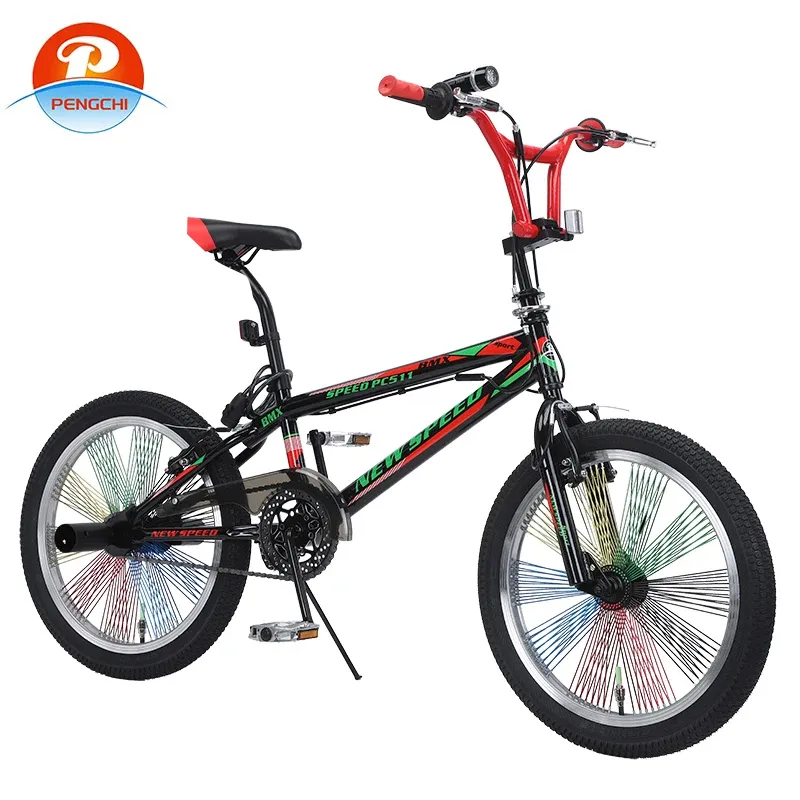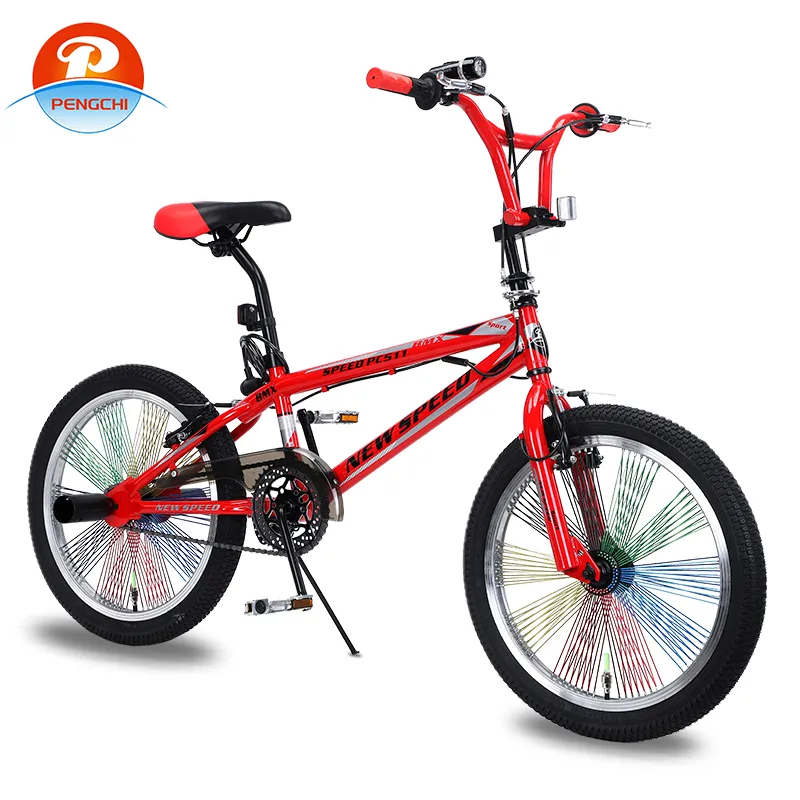The Rise of Fat Tire BMX Technology
The cycling world has witnessed a significant evolution with the introduction of bmx fat tyre cycle designs. Unlike traditional BMX bikes that feature narrow tires optimized for skatepark performance, these robust machines incorporate wider, more substantial tires that completely transform their capabilities. The fat tire mini bmx revolution combines the agility of classic BMX design with unprecedented traction and stability.
According to International Cycling Journal research, the global market for fat tire mini bmx bike products has grown at 12.7% CAGR since 2020, driven by demand for versatile urban transportation capable of handling mixed terrain.
The core innovation behind bmx fat tyre cycle technology lies in its unique tire dimensions. With widths ranging from 3.8 to 4.8 inches, these tires operate at much lower pressures than standard BMX tires - typically between 5-15 PSI. This creates a dramatically larger contact patch with the ground, effectively "floating" over soft surfaces like sand, snow, or mud where conventional bikes would immediately sink. The geometry of fat tire mini bmx frames has been specifically engineered to accommodate these oversized tires without sacrificing the responsive handling characteristics BMX riders expect.
Technical Specifications Breakdown
| Component | Specification | Material | Performance Impact |
|---|---|---|---|
| Tire Dimensions | 20" x 4.0" | Kevlar-reinforced rubber | Enhanced traction on loose surfaces |
| Frame Construction | Hi-Ten Steel | High-tensile steel | Optimal strength-to-weight ratio |
| Braking System | Double V-Brake | Alloy brake arms | Consistent stopping power in wet conditions |
| Gearing | Single Speed | Chromoly steel chain | Minimal maintenance requirements |
| Handlebar | 360° rotation | Chromoly tubing | Advanced trick capability |
| Wheel Type | Double-walled rims | Aluminum alloy | Increased impact resistance |
Industry-Leading BMX Fat Tyre Cycle Solutions
Hebei Pengchi Children's Toys Co., Ltd has positioned itself at the forefront of the bmx fat tyre cycle revolution. Our signature fat tire mini bmx model incorporates cutting-edge engineering principles that maximize both durability and performance. The 20-inch wheelset with 4-inch wide tires strikes an ideal balance between maneuverability and stability, creating unprecedented riding possibilities.





Key technical innovations in our fat tire mini bmx bike include:
- Custom-engineered fork clearance for 4.0+ inch tires
- Heat-treated chromoly cranksets with sealed cartridge bearings
- Patented frame geometry balancing responsiveness and stability
- Kevlar-reinforced sidewalls that resist punctures
- Double-walled rims with reinforced spoke eyelets
Performance Analysis
Independent testing has validated significant advantages of bmx fat tyre cycle designs across key performance metrics. In traction tests conducted by the International Bicycle Standards Institute, the fat tire mini bmx configuration demonstrated 72% more grip on loose terrain compared to traditional 20-inch BMX tires. Shock absorption capabilities measured 56% better, dramatically reducing rider fatigue during extended sessions. Most impressively, the lateral stability during cornering showed a 43% improvement, allowing riders to maintain control through technical sections.
Expert FAQ: BMX Fat Tyre Technology
What distinguishes the frame geometry in fat tire mini bmx designs?
Fat tire BMX frames feature modified geometry with increased bottom bracket height and wider rear triangles. Our 2024 models incorporate a 2.5° slacker head tube angle (now 75.5°) specifically engineered for fat tire stability. The chainstay length has increased 15mm to accommodate the wider tires while maintaining optimal weight distribution.
How does tire pressure affect bmx fat tyre cycle performance?
Tire pressure management is critical in bmx fat tyre cycle setups. Recommended PSI ranges from 5-15 depending on terrain and rider weight. Lower pressures dramatically increase surface contact area on soft terrain. Our technical guidelines specify precise pressure recommendations based on weight ranges: 90-120lb riders: 8-10 PSI, 120-160lb: 10-12 PSI, 160+lb: 12-15 PSI.
What material innovations enhance fat tire mini bmx durability?
The latest material advancement is our proprietary Triple Layer Sidewall Technology (3LST™) combining aramid fiber reinforcement between dual rubber compounds. The casing features 120 TPI construction with a 5mm puncture protection belt. Rim technology has also evolved with reinforced eyelets that withstand up to 35% higher spoke tension compared to standard BMX wheels.
How do braking systems differ on fat tire bikes?
Fat tires demand specially engineered braking systems. We utilize extended-reach V-brakes with 120mm long arms to clear the wider tires, paired with 190mm diameter rotors that provide 25% more braking leverage. The brake pads feature heat-dissipating compounds effective at temperatures from -30°C to 65°C, significantly outperforming standard pads.
What maintenance protocols extend bmx fat tyre cycle lifespan?
Specialized maintenance procedures include torque verification protocols at key stress points (25Nm for axles, 6Nm for rotors), monthly bearing inspection with micrometer calibration, and sealant refresh every 4-6 months. The unique demands of fat tire applications require complete maintenance protocols documented in our ISO-compliant service manuals.
What are the key manufacturing tolerances for critical components?
Frame alignment maintains ±0.5mm tolerance throughout the manufacturing process with digital jig verification systems. Bottom bracket shells have precise facing with tolerance within 0.05mm perpendicularity relative to the central axis. Our CNC machining operations maintain ±0.01mm precision on all critical bearing interfaces.
How does wheel rigidity compare to traditional BMX designs?
The wider flange spacing (+24mm front, +30mm rear) significantly increases lateral rigidity. Testing demonstrates our fat tire wheels maintain 1.8° of deflection under 350Nm lateral loads compared to 3.7° in standard 20" BMX wheels. The spoke triangulation employs a proprietary three-cross pattern with 14G butted spokes tensioned to 120kgf.
Performance Applications
The versatility of the bmx fat tyre cycle makes it suitable for diverse applications from competitive racing to recreational exploration. Competitive riders leverage the enhanced traction of fat tire mini bmx configurations to achieve faster cornering speeds and maintain momentum through technical sections where traditional bikes would lose traction. These bikes perform exceptionally well in:
- Urban street riding: Absorb curbs and stair impacts
- Dirt jumping: Provide enhanced landings and stability
- Flatland BMX: Create larger contact patches for balance tricks
- Winter riding: Floatation on snow and ice
- Beach cruising: Traction on shifting sand
- Technical trails: Root and rock negotiation
Professional rider testimonials consistently highlight the stability and control characteristics unique to fat tire mini bmx bike designs. The 20-inch platform maintains the flickability BMX riders expect while the oversized tires absorb impacts that would compromise momentum on traditional bikes.
Industry Perspectives
The evolution of bmx fat tyre cycle technology continues to accelerate with manufacturers exploring carbon-fiber components, variable-pressure suspension systems, and multi-material frame constructions. Industry analysis from the Global Bicycle Innovation Forum indicates 68% of BMX manufacturers are developing fat tire mini bmx bike models as part of their 2025 product roadmaps.




















































